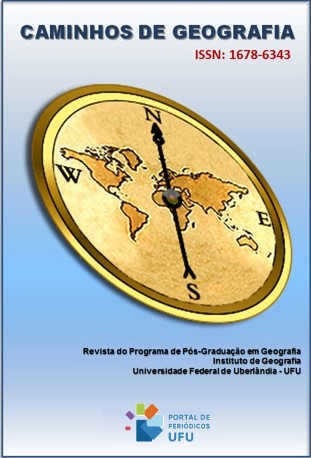PATTERNS OF URBAN LAND USE AND OCCUPATION IN THE CITY HALL - NEIGHBORHOOD I (CENTRO/BROTAS), SALVADOR – BA
DOI:
https://doi.org/10.14393/RCG259970329Keywords:
Building pattern, Geographic Information System (GIS), Socio-spatial segregation, Urban planningAbstract
This study aims to analyze the patterns of land use and occupation of the City Hall-Neighborhood I (Centro/Brotas), Salvador - BA, to reveal the socio-spatial disparity. The research uses the photointerpretation method, without being excessively technical, based on high-resolution aerial photographs in a Geographic Information System (GIS) environment, with a quali-quantitative approach to the use and occupation of urban land to support the planning and management of urban space. It presents a reading of the geographic space based on cartography, considering the demographic census database, and also explores the aspects of the urban landscape in assessing the social, economic, and racial segregations that make up the structures of an important part of the metropolis of Salvador. The research consists of producing a geographic database (cartographic and photographic) institutionally available to researchers and other segments of society in the sense that civil society and public management can understand the present and project the future of the oldest capital of Brazil.
Downloads
Downloads
Published
How to Cite
Issue
Section
License
Copyright (c) 2024 Gustavo Barreto Franco, Laís Guimarães de Magalhães, Luis Filipe de Alcântara Motta, Beatriz Gomes Santos, Sidnara Nascimento da Silva

This work is licensed under a Creative Commons Attribution-NonCommercial-NoDerivatives 4.0 International License.
Autores que publicam nesta revista concordam com os seguintes termos: a) Autores mantém os direitos autorais e concedem à revista o direito de primeira publicação, com o trabalho licenciado sob a Creative Commons Atribuição-NãoComercial-SemDerivações 4.0 Internacional. b) Autores têm permissão e são estimulados a publicar e distribuir seu trabalho online (ex.: em repositórios institucionais ou na sua página pessoal), já que isso pode gerar alterações produtivas, bem como aumentar o impacto e a citação do trabalho publicado. c) Em virtude de aparecerem nesta revista de acesso público, os artigos são de uso gratuito, com atribuições próprias, em aplicações educacionais e não-comerciais.











